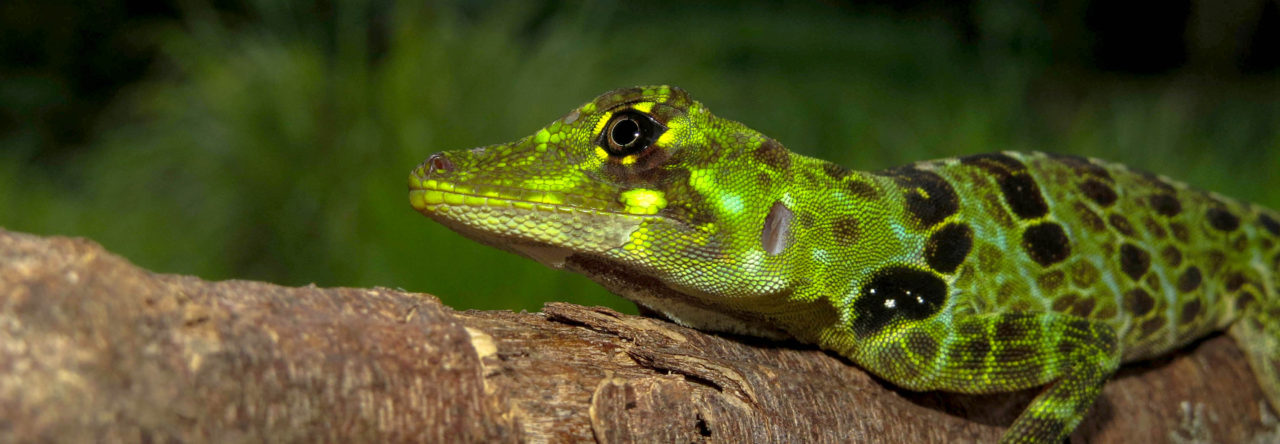
We reported recently that knight anoles (Anolis equestris) have shown up in the T&C. Here’s more on the story from B Naqqi Manco, the Terrestrial Ecologist at the Department of Environment and Maritime Affairs, Turks and Caicos Islands Government:
Cuban knight anoles are currently known from two sites on Providenciales: Vicinity of Beaches Resort in The Bight and Amanyara Resort on Northwest Point. Both populations showed up after the importation of large trees for landscaping from Miami. The properties are both irrigated pretty heavily to keep the bigger trees going. The tree imports were brought in before the Department of Agriculture was fully operative, so unfortunately things got in at that time that probably shouldn’t have made it through.
I don’t have confirmation of the knight anoles breeding, but I know The Bight population has been spreading with individuals having been found on adjacent properties and in a nearby residential neighbourhood. I would be very surprised if they’re not breeding on either site. Unfortunately we don’t have the capacity to monitor them well but this is something we want to keep a closer eye on and it would make a worthwhile research project for a student or intern.
Thus far, they have not been reported from any other island or cay.













